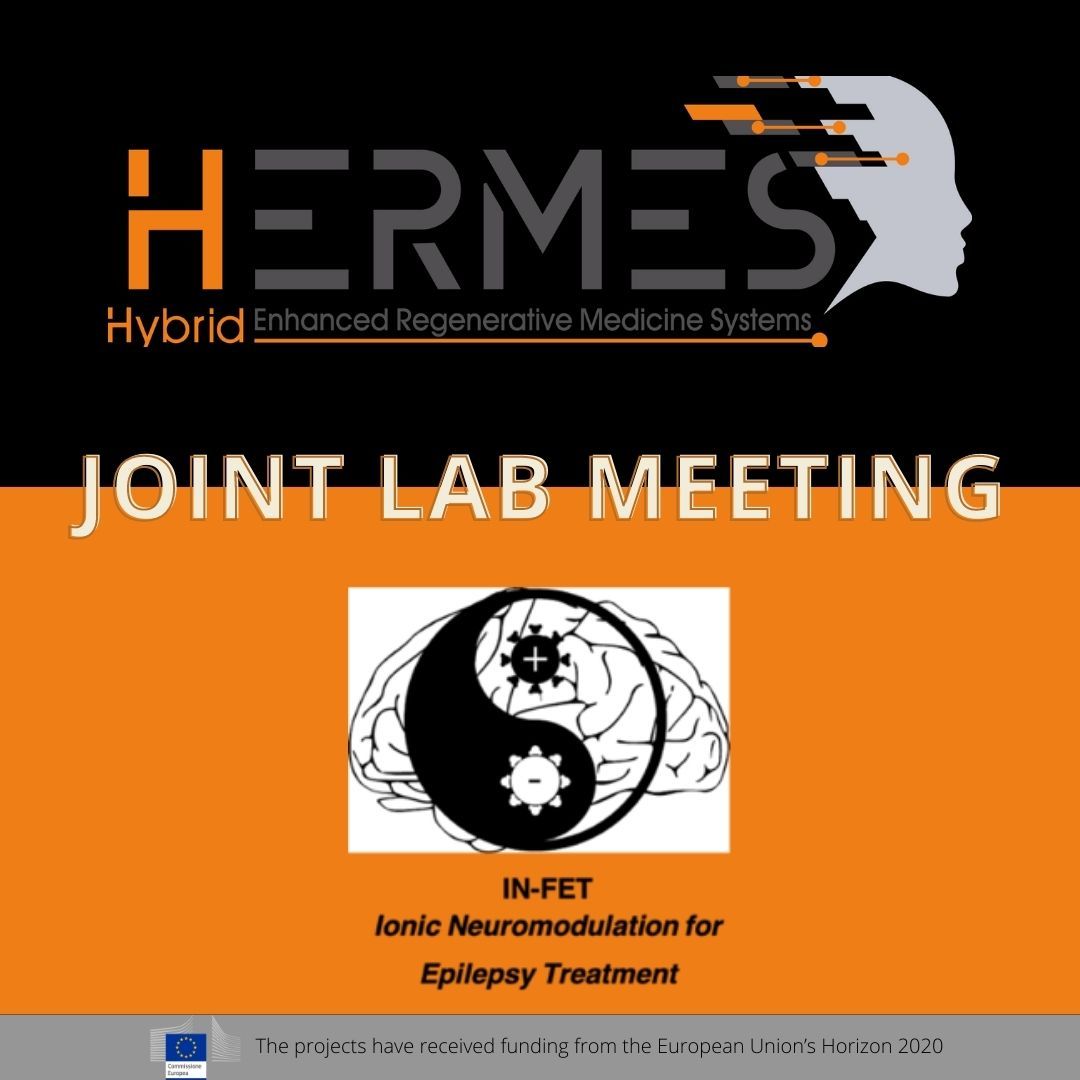JOINT LAB MEETING: HERMES & IN-FET

“Almost all people with epilepsy will need to stay on medical therapy to minimize the probability of having a seizure. With HERMES and IN-FET we are trying to make a difference to heal epilepsy rather than treating it.”
HERMES-FET project coordinator Gabriella Panuccio
Before telling about the exciting debate enriched by many questions and answers, let’s introduce the two FET projects:
IN-FET is the acronym of a European scientific project consortium, funded by the European Commission during 2020-2023. It stands for Ionic Neuromodulation For Epilepsy Treatment and brings together engineers, biologists, physicists, and neuroscientists to tackle the hard problem of repairing and treating the brain.
This consortium is developing a totally new approach to manipulate neuronal cell excitability – applying neuronal firing by direct ionic actuation at the microscopic scale and monitoring cell responses by nanoscale transistors. This multidisciplinary consortium aims to establish proof-of-principle for breakthrough neuromodulation technology by enabling future brain implants for epilepsy treatment through in vitro testing of special polymers and ultra-sensitive ion sensor arrays.
HERMES fosters the emergence of a novel biomedical paradigm, rooted in the use of biohybrid neuronics (neural electronics), which they name enhanced regenerative medicine. To overcome the biological uncertainty of canonical regenerative approaches, HERMES consortium proposes an innovative solution based on intelligent biohybrids, made by the symbiotic integration of bioengineered brain tissue, neuromorphic microelectronics and artificial intelligence, to effectively drive self-repair of dysfunctional brain circuits and they validate it against animal models of epilepsy.
After a welcome speech to all speakers by Michele Giugliano, HERMES project coordinator Gabriella Panuccio opened the meeting with an introduction of the concept “The HERMES project: enhancing the future of brain regeneration”.
Then, Carlo Ierna (philosopher, Radboud University) extended the concept of enhanced brain regeneration to philosophy, ethics, policy and society to stress the emergence of a new innovation eco-system. His presentation was “Neurotechnology and society focused on the social perception and ethical impact of brain computer interfaces and invasive neuromorphic technology.
Francesca Ciarpella (Uni Verona) introduced the “Molecular and functional characterization of 3D mouse brain organoids” as novel neurotechnology approach and protocol, and the functional activity of cells.
Gemma Palazzolo (IIT) answered to the question “how can we regenerate brain tissue?” presenting “Design of biomimetic and bioactive ECM for brain tissue engineering”.
Next speaker Michele Zoli (Ricerca Unimore) presented “In vivo epilepsy model & grafting” as a much crucial step in performing Enhanced Regenerative Medicine therapeutic experiment approach that includes the biohybrid model implantation step and the performance analysis.
Then, Michele Giugliano (SISSA) introduced the “IN-FET project” and stressed some points in common and differences between the two projects’ visions, like in vivo experiments.
Renaud Jolivet (University of Geneva -UNIGE) presented “Adapting communication delays between neurons: a new type of brain plasticity”. UNIGE main role in IN-FET is in the simulation of neurons interfaced hardware device.
Matteo Manzati (SISSA) introduced “Foetal neural progenitors contribute to postnatal circuitsfomration ex vivo: an electrophysiological investigation”.
Sigfried Karg (IBM Research) was the last speaker and presented “Computing with Oscillating Neural networks.
This joint lab meeting was a great opportunity to learn from each other, promoting useful interdisciplinary debate and different pathways to a common goal, that is a novel approach that will shift the concept of biomedical interventions from treating to healing.